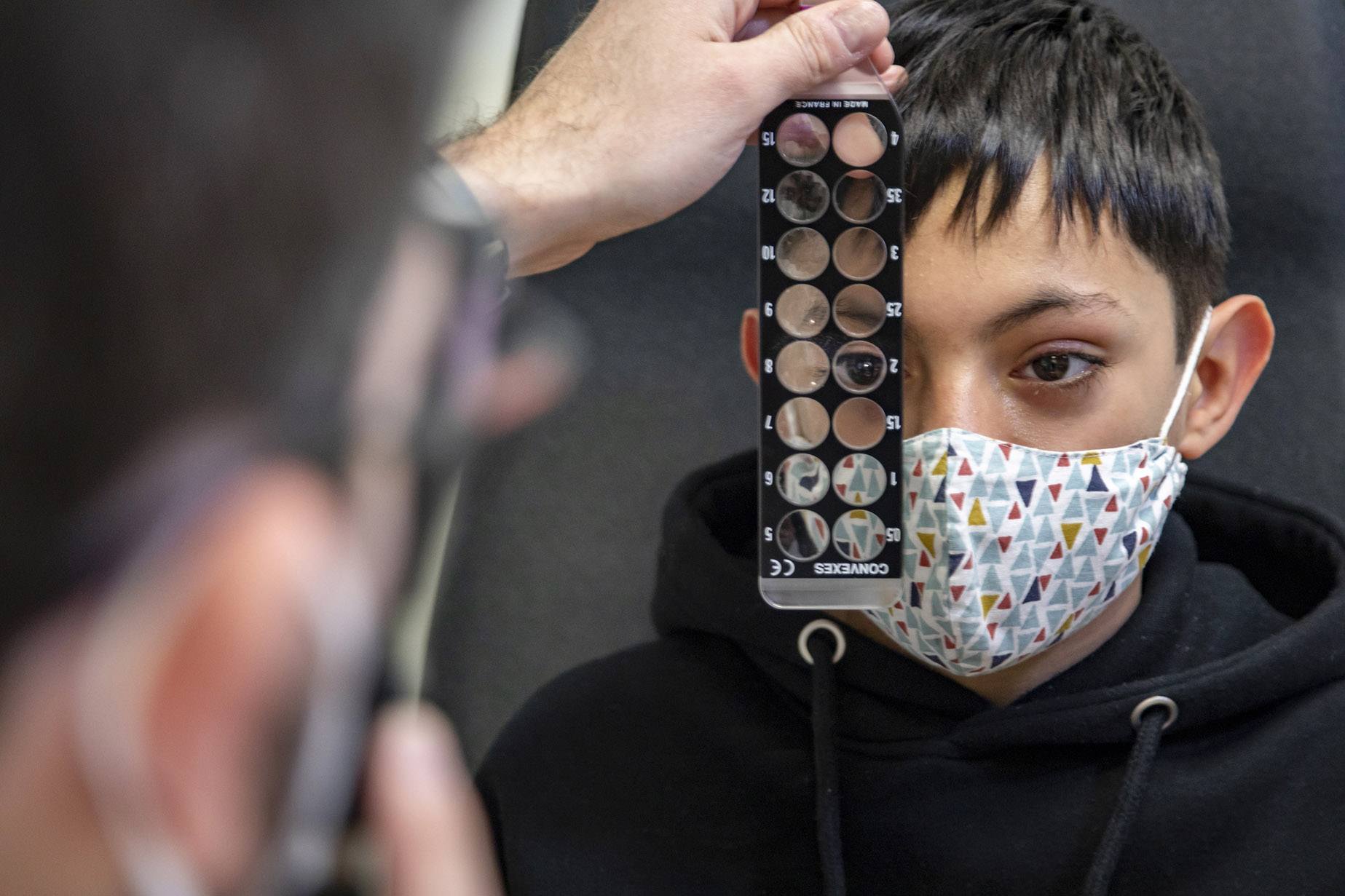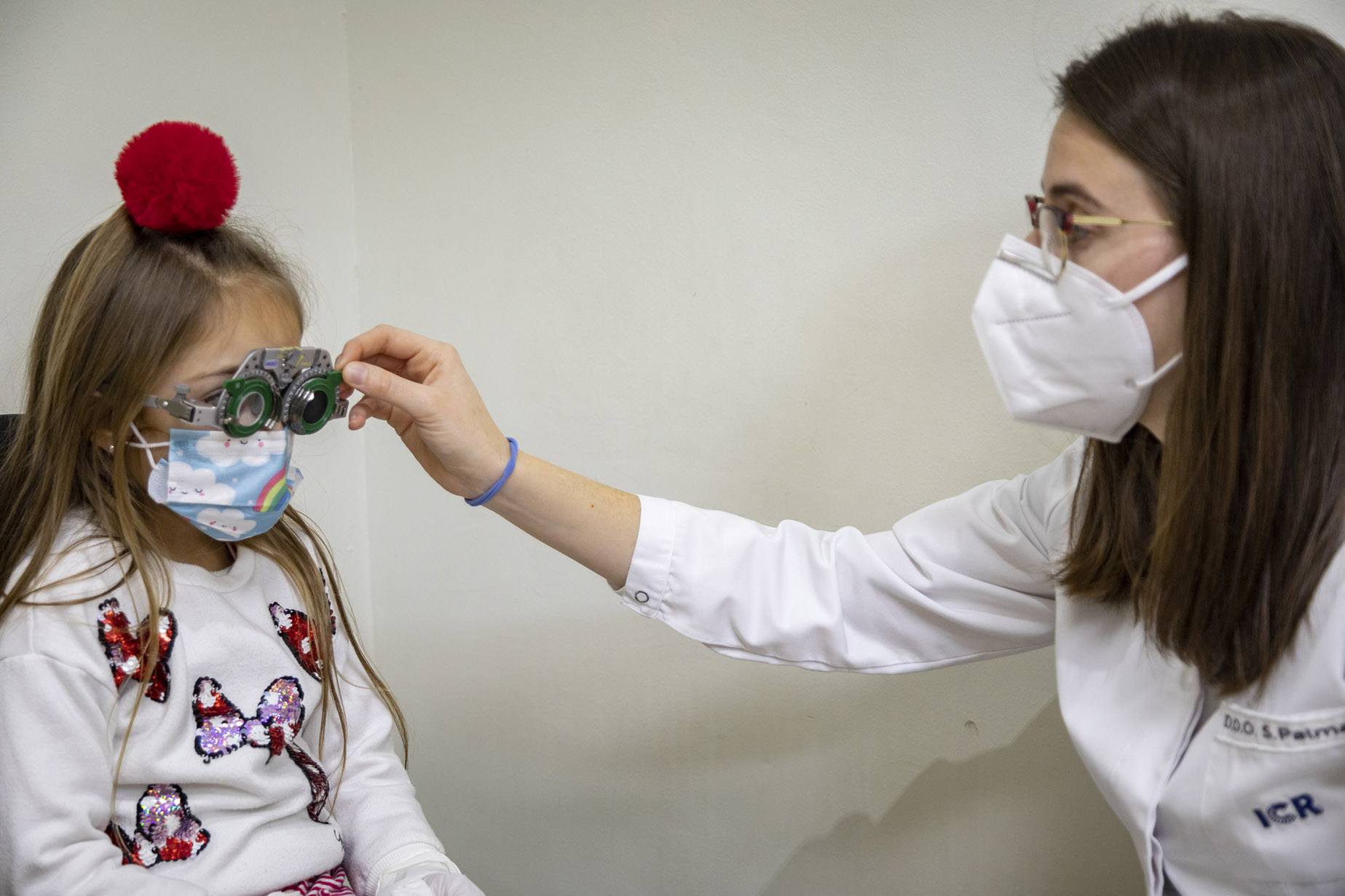
All children should have an ophthalmologic examination before the age of 3. When they are young, they are not able to tell if they see well or not, so an eye exam can detect and prevent vision loss, which in some cases, if not treated early, can be irreversible.
Some problems, such as amblyopia or lazy eye, can be treated in infants and young children but may be irreversible once the maturity of the visual pathway is reached (from 8 years of age).
In addition, a pediatric ophthalmologist should always be consulted if parents, teachers or the pediatrician observe any symptoms or warning signs.
For any of the following symptoms it is recommended to have a complete examination by a specialist in pediatric ophthalmology:
It is important to examine a newborn’s eyes and perform a red reflex test (a basic indicator that the eyes are healthy). Also, any newborn who is premature or at risk for other eye problems because of a family history of severe childhood vision disorders or signs of abnormalities should be thoroughly examined.
An ophthalmologic checkup should be performed if the baby has a deviated eye or if the pediatrician detects any ocular abnormality.
A test can be performed to assess the child’s visual skills at the preverbal age and to assess ocular alignment. If the child’s eyes are misaligned, have amblyopia or refractive errors, he/she should undergo a checkup to start treatment as soon as possible. At 18 months is the indicated age to explore the fundus with drops to dilate the pupil.
Between the ages of three and four, the child’s vision and eye alignment should be evaluated. In addition, and since at this age the child is usually cooperative, visual acuity can be assessed by using optotypes. One option when the child is not very cooperative is the use of autorefractometers, although they are much less accurate than the optometrist’s schiascopy.
The main purpose of this examination is to rule out lazy eye (amblyopia), which is treatable in childhood, but cannot be corrected if it is detected after the age of 8 or 10, since visual development is complete by that age. Also, the need for glasses will be ruled out, whether the child has hyperopia, myopia or astigmatism.
From the age of 3-4 years an annual ophthalmologic checkup is recommended.
When the child starts school, or at any time when there is a suspected eye problem, an ophthalmologic checkup is necessary to detect any misalignment or refractive problem, among others.
Hyperopia is the most common refractive defect in this age group. It can be corrected with the use of glasses.

Besides exploring the visual acuity, we need to graduate the child’s vision, so after a first visit a refraction test is usually performed (to measure the errors in the eye focus and to determine the exact graduation) and an examination of the fundus of the eye.
In order to perform these tests correctly, it is necessary to dilate the pupils with cycloplegic eye drops, which relax accommodation and dilate the pupil.
The eye drops are administered by applying one drop 90 minutes and 45 minutes before the visit. It is very important that this time elapses between the instillation of the first drop and the examination to ensure complete relaxation of accommodation. Otherwise, an erroneous measurement of refraction may occur. It should also be noted that this eye drop produces photophobia and blurred vision between 24 and 36 hours. For this reason, pediatric checkups are usually dissociated and performed in two parts on separate days.

In the first ophthalmologic examination, visual acuity will be assessed, vision will be graduated and refractive problems or ocular pathologies that may affect the child’s normal development will be ruled out.
It is possible that after a first visit, the ophthalmologist may consider it necessary to perform a complementary test for which you will have to come to the center on another day. In this second appointment, the complementary test will be performed together with another visit with the ophthalmologist.
Yes, this complementary test, which may require the prior application of drops, is performed on different days for the benefit of the child, as we have found that these offer greater collaboration and also reduces the risk of Covid infection.
No. It is a very safe eye drop that has been used for many decades. In some circumstances, they may cause drowsiness or irritability, so it is necessary to reduce their concentration in children weighing less than 25 kg.
| Most frequent visual problems at this age | Symptoms and warning signs |
|---|---|
| Amblyopia or lazy eye | Headaches or cervical pain. |
| Strabismus | Misalignment of the eyes |
| Myopia and astigmatism | Squinting to focus at long distances |
| Hyperopia | History of parents with hyperopia |
| Discromatopsia | Color vision alterations |
| Conjunctivitis | Redness |
Contact us or request an appointment with our medical team.